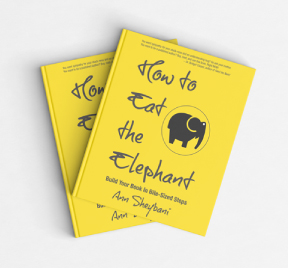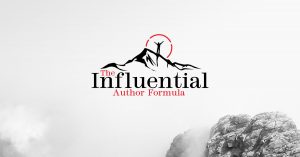Writing
Three narrative-driven nonfiction genres
September 10, 2023
Many of us become coaches, speakers, or service professionals, if you will, because we’ve had to solve a particular problem for ourselves. Through trial and error, we figured out the process required to get the desired outcome. Somewhere along the road, we realized our story—rife with hard-won lessons—could be useful to people, inspirational, even. This story could save others time and grief, which is great because that means we haven’t suffered for naught.
Many of my writing clients show up on my doorstep wondering how best to use their story to attract clients, to demonstrate that they have the solution to a very particular and urgent problem. They’ve got all of these stories, all of these lessons, but they don’t know how to set them down on the page in a compelling way.
There are lots of ways you can go wrong with a personal story-driven narrative. You can create a 750-page autobiography that no one wants to read, which is bad; or worse, a confusing romp down memory lane with a bunch of teaching points dropped in haphazardly at the end: The reader isn’t sure what genre he’s reading, and readers so don’t like that point of confusion. Lose the reader, and you lose their business in one foul swoop.
One of the biggest issues I see when I’m analyzing manuscripts is the tendency to mix genres—starting out as a memoir, perhaps, but then reverting to self-help— which comes about when the writer doesn’t understand the rules of genre.
There are a number of genres that utilize personal narrative in the interest of inspiring readers with a particular problem, but I’d like to run through the three most common: memoir, self-help, and inspirational. I’d like to touch on some of the rules of each so you can prevent the creation of a chocolate mess and drive potential clients off in droves.
Memoir
A memoir requires that we stay in the story, that we describe what’s going on from our perspective (or the perspective of the person we’ve chosen to write about, which is less common; a grandfather, as in the case of Rick Bragg’s Ava’s Man.) We don’t suddenly break out and address the reader, offer up suggestions or pontificate on a point.
In a memoir, you allow the reader to eavesdrop on you in your world as you tell your story, but you never address him or her. They learn things only because they can relate to how you think and feel when faced with challenges. The lessons are never overt, however, they must be buried within the story. In a memoir, the “I” takes center stage; the “you” is nowhere to be found.
Good memoirs have a clear container; they don’t describe the whole of existence (that would be an autobiography) but focus on a particularly eventful chapter in one’s life. For example, the container of the memoir I’m working on begins when I meet the man I end up marrying and following to Iran and ends when I refuse to go back with the kids, precipitating our divorce.
Anything that happened before that era—growing up in an alcoholic household, “dating” an assortment of ludicrous men—would be considered backstory. Backstory can be woven in between the lines, so to speak, in such a way as to explain what needs to be explained on the current timeline—the linear progression from that meeting point to the start of our divorce.
Good memoirs also show us how a character changes over time. The character does not stay the same; he or she goes through some sort of transformation. This transformation, which takes place in “predictable” stages, is called a character arc. In my story, we see Ann move from emotional disconnect and co-dependency to someone who knows she can stand on her own two feet and handle life’s responsibilities. She isn’t the same Ann at the end.
There can be a number of arcs in a memoir, but the protagonist’s arc is the most important.
NOTE: If you have no interest in making a living out of helping people deal with a particular problem, then satisfy yourself with writing a beautiful self-exploration of your own battle. It will be useful and inspiring to others as an example of how one person dealt with the shit, one they might model.
Self-help
A self-help book speaks directly to the reader, addresses what I would call the “you”. The design of this genre is to explore a given problem and guide the reader to a solution. You make him or her—the reader—center stage, and you only utilize bits of your story to underline a point you’re trying to make or dramatize a concept, but we don’t stay in the story very long. We nip in and nip out because we’re there to talk to them, our reader, to teach a lesson, to walk them through a set of proven steps to get the specific result they’re after.
Some self-help books, like Fearless Living, for instance, uses a good deal of the author’s story, particularly in the beginning, but the focus is still on the “you”. The “I” is there as a helper, but it’s all about the “you.”
The “I” and “you” don’t like to share center stage. That’s why we have to get the balance of personal story and lesson right so we can avoid genre confusion and the associated disconnect.
Rule of thumb: Cut out 90% of your personal story if you’re working in this genre and focus entirely on the solution to the problem, your designed solution, and make it relevant to your target audience.
The specific problem you mean to address in your self-help book might be co-dependency, social anxiety and emotional disconnect, the mind/body connection with chronic pain, or any one of hundreds of recognized problems. You, the author, understand the problem because you’ve lived with it. You have a series of steps that you took to find relief for yourself that you can teach others. You can certainly describe what the problem feels like in very visceral terms—the pain island you and others experience—allowing the reader to know that you get it, that you get them, and you can describe what it feels like on the other side when you have that problem managed—the pleasure island you and others could experience if they followed the steps you lay out. You do this with your stories.
Finally, we don’t have a traditional character arc, the way we do in a memoir, but we have an arc of sorts. We must move from pain to pleasure along a series of steps. We start with pain, we do this, this, this, and this, which brings us to pleasure, a resolution of the problem.
Inspirational
An inspirational book is sort of a crosshatch of the two genres, a hybrid of sorts.
This genre allows you explore a particular concept or issue without necessarily attempting to solve it. Like self-help, we have a blend of the two components—personal narrative in the form of story and the overt drawing out of lessons—in varying percentages. Some inspirational books may be 90% story, 10% lesson; others, the inverse.
The driving force of this book is the exploration of a given problem—anxiety, numbing out, emotional disconnect, mindfulness— as a way of leading the reader towards a clearer understanding of the issue or even to a solution. Your stories serve to support that issue and its exploration, not overwhelm it. Your stories usually serve as the potato on the plate, not the steak.
I work with this genre a lot, but the genre is tricky. It requires that you develop a pretty tight formula for each of the chapters. You tell a story, you draw out the primary concept or lesson embedded in that story and explore it, expound upon it, then you directly relate it to others, to your reader, essentially asking him or her to consider how the concept or lesson might play out in his or her world.
Sometimes you can go way too heavy on the personal story and the lesson for the reader feels like a total afterthought, as though you’ve suddenly remembered that you have to make it relevant to your audience because they think you’re there to teach them something. So you’ve got to be able to make your story relevant to others, point out how they may be doing what you’ve done in their own lives, and speak to the errors in thinking, yours, theirs, people in general.
Most of the time inspirational books come off as memoir-lite, and that’s not always good. It’s easy to go down this path if you don’t really want to help others fix the problem you speak of; if all that teaching stuff is just something you throw in there because someone tells you it’s necessary when what you really want to do is make sense of your story for yourself, put it out there for others who can relate and get some use out of it. In other words, forget doing this and just write a memoir.
Like the other two genres, there must be an arc as well. Something has to change. We must move from confusion and pain to some deeper understanding and resolution at the end, even if you, the author, don’t feel as though you’ve got the issue completely licked for yourself.
Here’s the takeaway: The first choice you need to make as a writer of a client-attracting book is the genre you’re going with. If it’s memoir, for God’s sake, let it be memoir. You can’t be all things to all people. If you’ve got a terrific system to solve a problem and some great supporting story, go with self-help. If you mean to explore a problem, really understand it for yourself right along with others without offering a tried-and-true solution, inspirational is the way to go.


